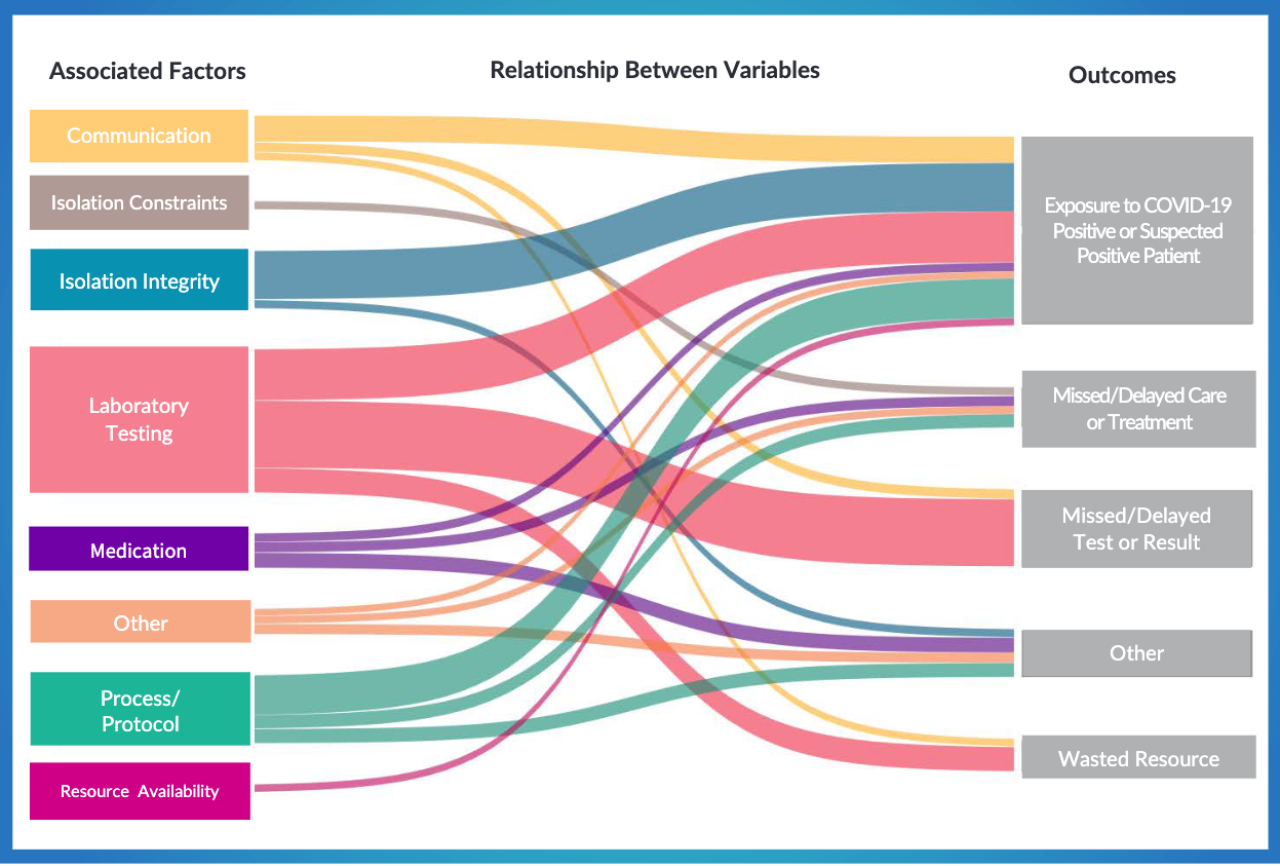Analyzing COVID-related patient safety events in hospitals
A recent analysis by the Pennsylvania Patient Safety Authority offers learnings for acute care hospital leaders interested in gaining a better understanding of factors that may contribute to COVID-related adverse events. Among 343 events studied, "exposure to a patient with or suspected of having COVID-19" was the most frequent adverse outcome (50%), including risk of exposure for staff as well as patients. The next most frequent event was "missed or delayed test or result" (31%). The analysis grouped factors associated with these outcomes into 13 categories, ranging from admission screening and inadequate disinfection to isolation integrity and resource availability. The Safety Authority found that the single leading factor in these events, which took place in the earliest days of the pandemic in Pennsylvania, was laboratory testing (47%), but that more than one-third of the adverse events (36%) could be traced back to more than one associated factor.
>> Read the Authority’s 6-page report here
Relationship between associated factors and outcomes
